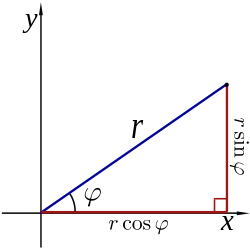How do you find parametric equations for the path of a particle that moves along the #x^2 + (y-3)^2 = 16# Three times around counterclockwise, starting at (4,3) 0 ≤ t ≤ 6pi?
1 Answer
Explanation:
for circular motion, polar co-ordinates are the way to go.

we need however to tweak the usual Origin based system, ie
[to be clear we will use t as the parameter instead of
so our start point is
now for t = 0 this form already starts at (4,3) because that is
it has to rotate 3 times counterclockwise in
the usual period of the simplest polar parameterisation is
so in that
plus in polar the usual

